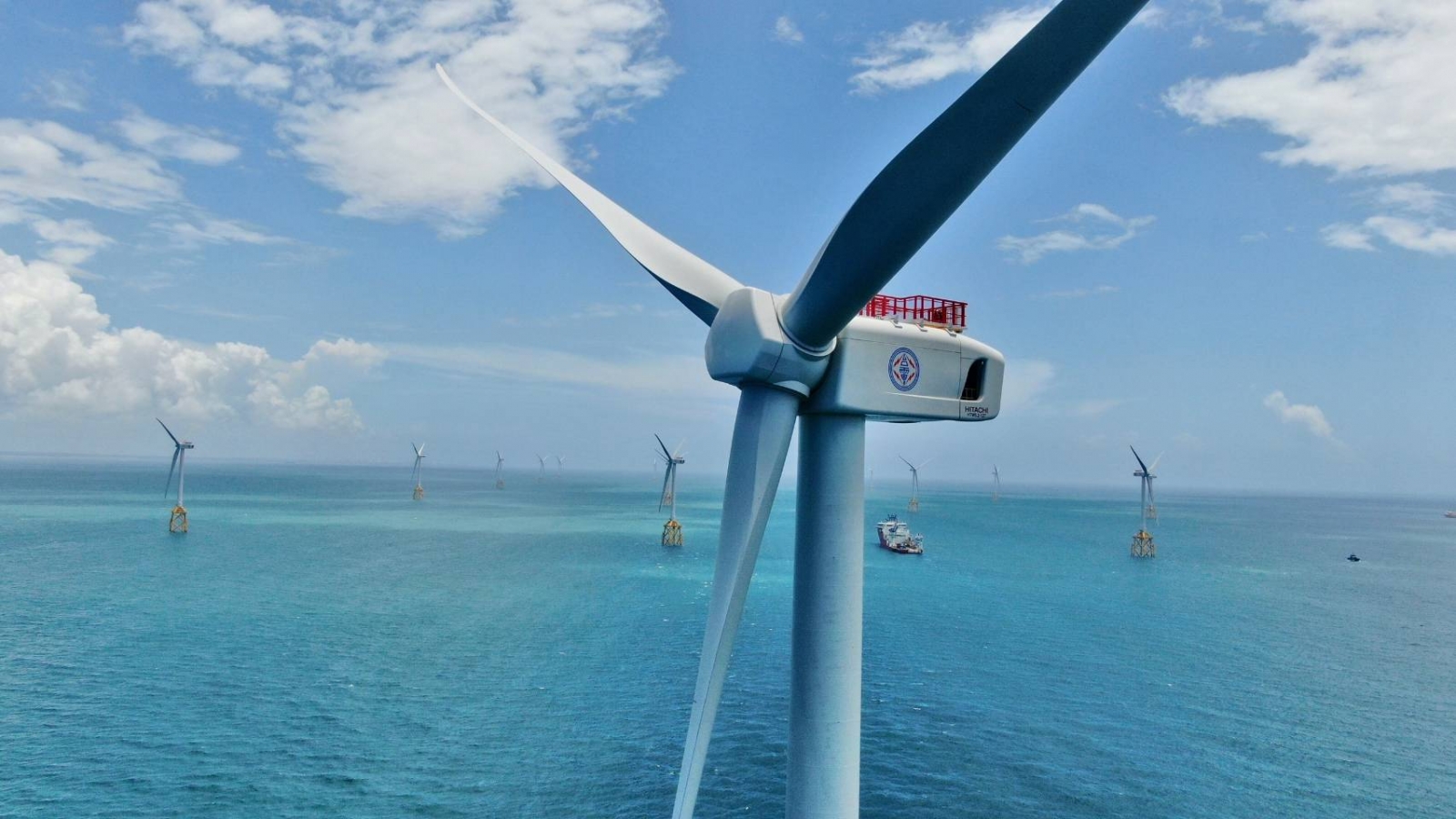Taiwan’s offshore wind development has gradually matured, offering vast business opportunities for localization and has geared up for entering the Southeast Asian market, according to speakers at the Offshore Wind Summit 2023.
Taking place on Oct. 20 at the Taipei International Convention Center (TICC), the Offshore Wind Summit shed light on the current state, future planning, and green finance development of Taiwan's offshore wind power industry.
-2.jpg)
Officials, academics, and industry experts exchanging views on Taiwan's offshore wind energy policies. (Photo: Mirror Media)
Approximately 100 wind turbines added this year, heading for 5.6 GW by 2025
Wind power is not exclusively for foreign investors, and Taiwan must nurture competitive domestic suppliers, said Vice Premier Cheng Wen-tsan (鄭文燦), calling for investment from both private and state-run banks. It is expected that the financing demand for the first and second stages of the Phase 3 Offshore Wind Zonal Development will amount to up to NT$800 billion.
Cheng described the current development of offshore wind power in Taiwan as "adolescence to adulthood,” which targets a cumulative capacity of 5.6 GW by 2025, followed by an annual growth of 1.5 GW.
Currently, Taiwan has three operational offshore wind farms with a total of 260 turbines, accumulating an installed capacity of 2 GW.
According to Minister of Economic Affairs Wang Mei-hua (王美花), licensing for offshore wind development in some European countries can take five to ten years. "If this were in Taiwan, we would have already been 'fired',” she said.
Minister Wang said that the deployment of wind farms in Taiwan is relatively efficient. Construction has progressed smoothly after overcoming challenges of the COVID-19 pandemic and supply chain issues, with an additional 100 wind turbines expected this year.

Taiwan's favorable wind conditions during fall and winter push offshore wind power generation to a record high in September this year. (Photo: Ministry of Economic Affairs)
China Steel strives for localization; local developer calls for consolidation of fragmented wind farms
China Steel, which has been supporting wind power development in Taiwan, has accumulated rich experience in localization over the years since the establishment of the Offshore Wind Power Component Localization Alliance (Wind-Team) in 2016.
"We have a total of 27 localization projects, which cover over 60% of the total procurement amount and holds the highest localization proportion in Taiwan's offshore wind farms,” said General Manager Wang Xi-chin (王錫欽) of China Steel.
Wu Kun-da (吳坤達), general manager of Taiya Renewable Energy, proudly said that the company is the only "purely local" developer in Taiwan and "not a single foreigner is involved."
Wu believes that Taiwan's fixed offshore wind development is coming to an end, and the next key focus is floating wind power, which is expected to kick off in the stage 3 of Phase 3 zonal development. After completing the development of all offshore wind sites, the government should also pay attention to the fragmented ones, Wu said.
Wu told Reccessary that companies were not interested in offshore wind development because larger wind farms yield better benefits. However, with the prices of Corporate Power Purchase Agreement (CPPA) rising beyond NT$4, it has contributed to the development of fragmented and small-scale wind farms.
He called on the government to lower the threshold so that more developers are willing to invest, thereby spreading the risk.
-3.jpg)
Wu Kun-da (first from right) believes that Taiwan's wind power industry is ready to enter the international market. (Photo: Mirror Media)
Taiya eyes Vietnam's onshore wind sector
After achieving localization in Taiwan's wind power industry, Wu, who also serves as the chairman of Tianli Offshore Wind Technology, revealed that they have been discussing cooperation opportunities with local firms in Vietnam.
Wu said that Vietnam's wind power industry requires a "precipitous development" approach due to its power shortage issues, meaning that it should "skip the slow process and go straight to implementation.”
Onshore wind development should come first, followed by offshore wind, Wu added.
He also mentioned the nearshore wind power in North Vietnam, which "enjoys the capacity factor of offshore at the cost of onshore," potentially serving as a stepping stone for developers.
Wu said that they plan to start with their expertise in wind turbine operations, such as blade maintenance, tapping into the market with smaller projects and hoping to eventually serve as a bridge for global large-scale developers.
However, Vietnam still lacks comprehensive regulations, and there are concerns about compliance ability verification and credibility. “Without CPPAs, the investment risk will be relatively high,” he said.



